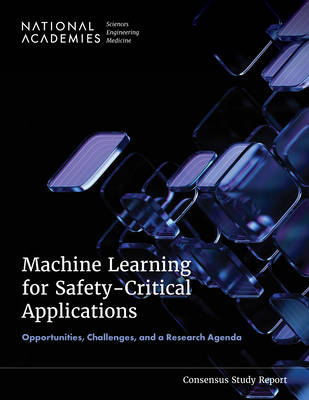
- Retrait en 2 heures
- Assortiment impressionnant
- Paiement sécurisé
- Toujours un magasin près de chez vous
- Retrait gratuit dans votre magasin Club
- 7.000.0000 titres dans notre catalogue
- Payer en toute sécurité
- Toujours un magasin près de chez vous
Machine Learning for Safety-Critical Applications
Opportunities, Challenges, and a Research Agenda
National Academies of Sciences Engineering and Medicine, Division on Engineering and Physical Sciences, Computer Science and Telecommunications Board, Committee on Using Machine Learning in Safety-Critical ApplicatiDescription
Advances in artificial intelligence, and specifically in machine learning, are enabling new capabilities across nearly every sector of the economy. Many of these applications - such as automated vehicles, the power grid, or surgical robots - are safety critical: where malfunctions can result in harm to people, the environment, or property. While machine learning is already being deployed to enhance the capabilities of some physical systems, extending the rigorous practices of safety engineering to include machine learning components brings significant challenges.
Machine Learning for Safety-Critical Applications explores ways to safely integrate machine learning into physical systems and presents research priorities for improving safety, testing, and evaluation. This report finds that designing machine learning algorithms in a way that aligns with safety engineering standards will require changes in research, training, and engineering practice - as well as a shift away from focusing on algorithmic performance in isolation.
Spécifications
Parties prenantes
- Auteur(s) :
- Editeur:
Contenu
- Nombre de pages :
- 82
- Langue:
- Anglais
Caractéristiques
- EAN:
- 9780309726665
- Date de parution :
- 28-02-26
- Format:
- Livre broché
- Format numérique:
- Trade paperback (VS)
- Dimensions :
- 216 mm x 279 mm

Seulement chez Librairie Club
Les avis
Nous publions uniquement les avis qui respectent les conditions requises. Consultez nos conditions pour les avis.







